Abstract
The contributions of J. R. Kantor and his system of interbehavioral psychology to the field of behavior analysis are examined. Two sources of information served to organize this investigation: (1) the historical record as described in the literature and (2) the results of a questionnaire survey sent to past and present editorial board members of the Journal for the Experimental Analysis of Behavior, the Journal of Applied Behavior Analysis, and Behaviorism. The outcome of this investigation showed that Kantor has had a broader influence than might heretofore have been recognized. More importantly, contemporary behavior analytic research and theory are evolving in directions either influenced by, or consonant with, his approach. We conclude that Kantor's interbehavioral psychology and his writings offer an important and valuable source of ideas and concepts for the future of behavior analysis.
Full text
PDF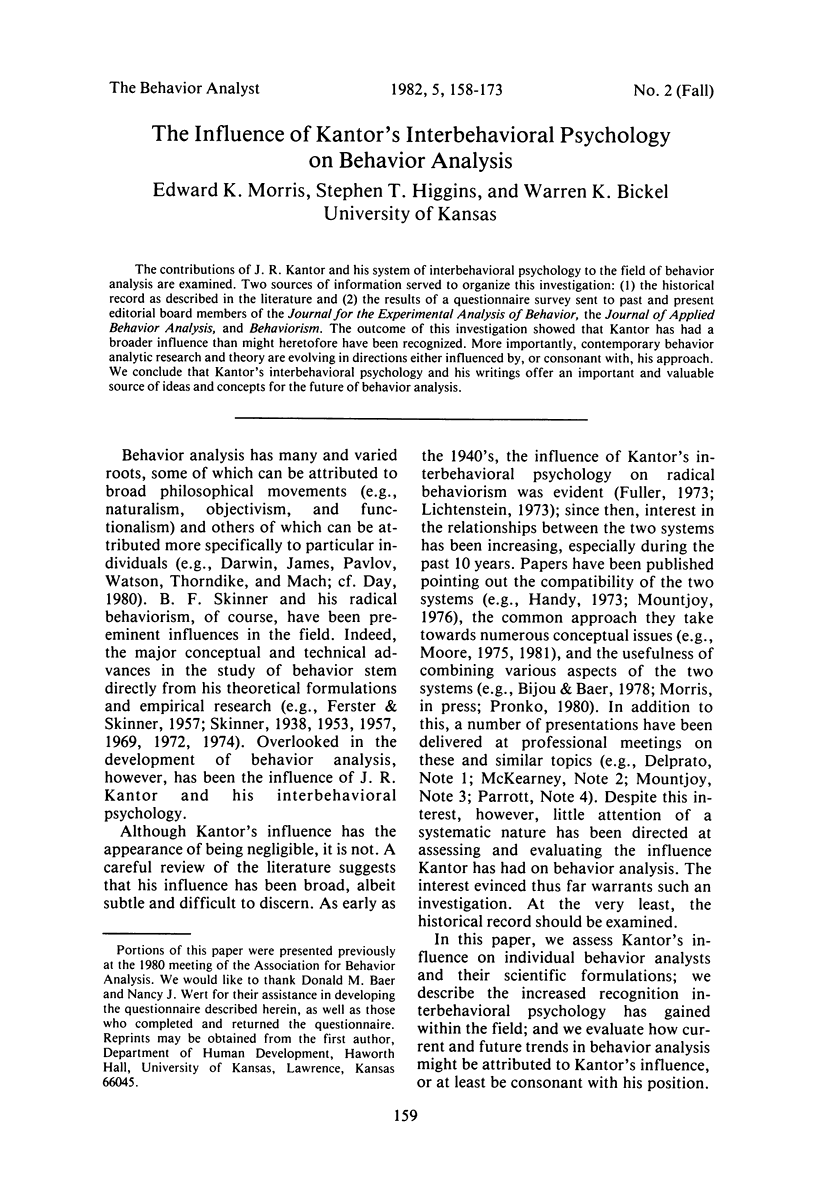
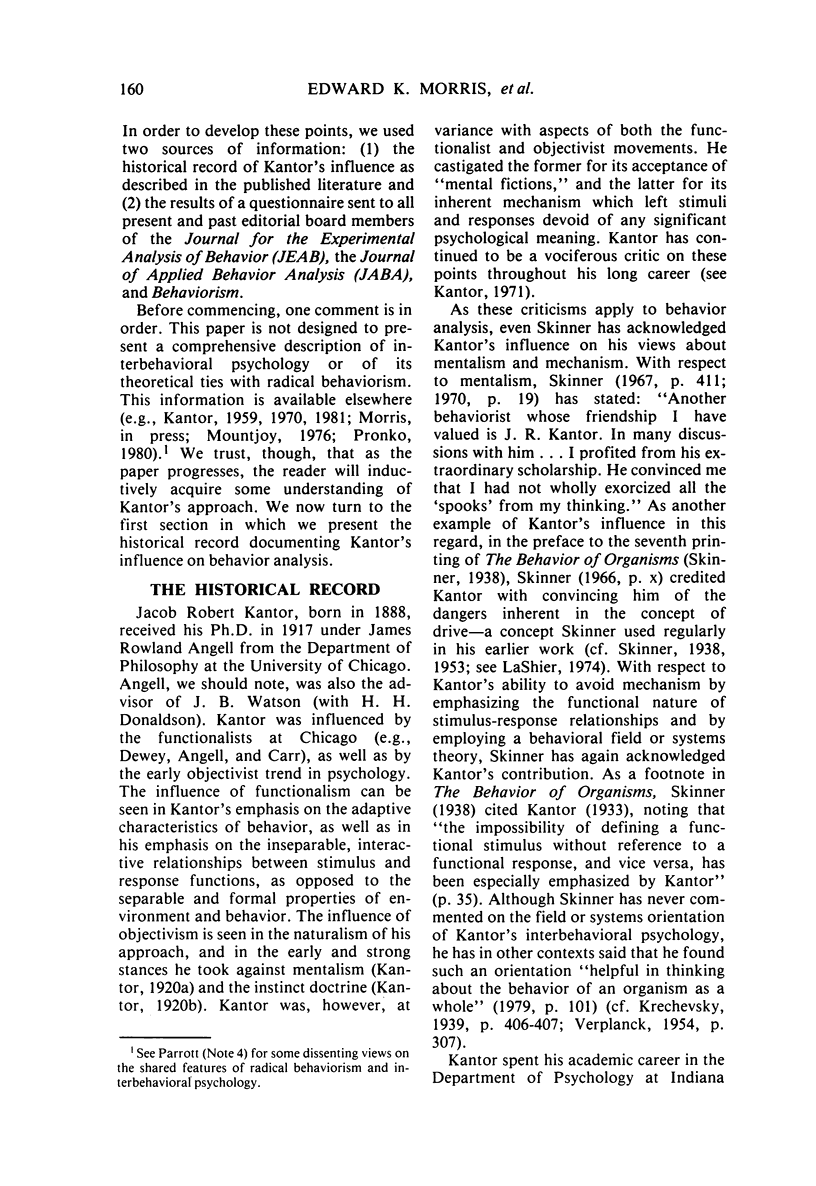
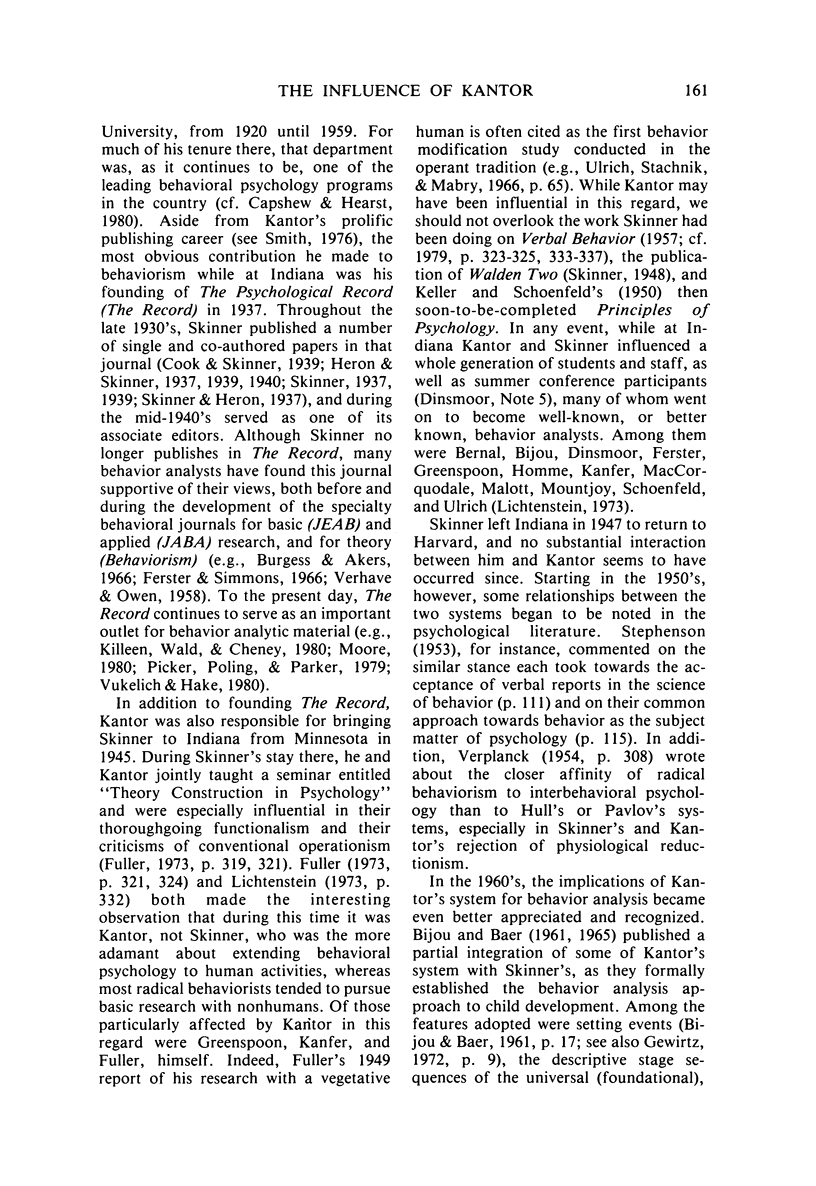
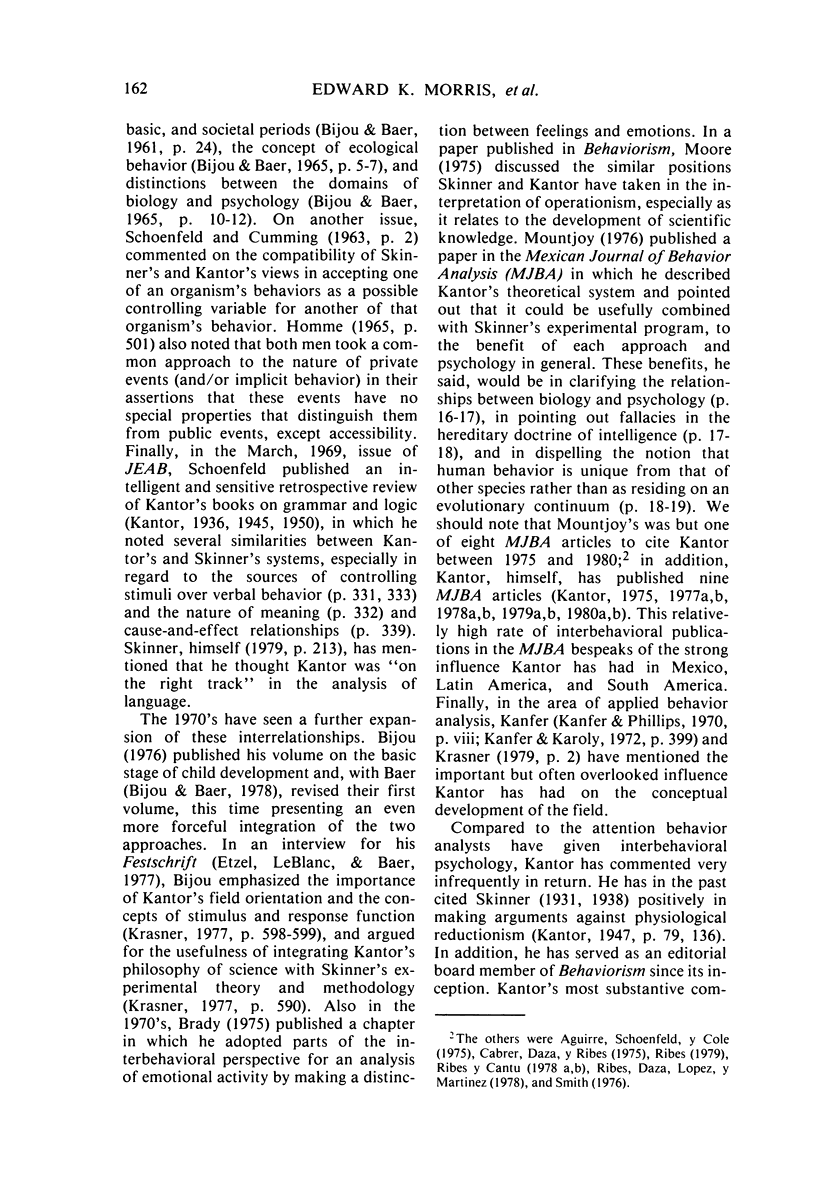
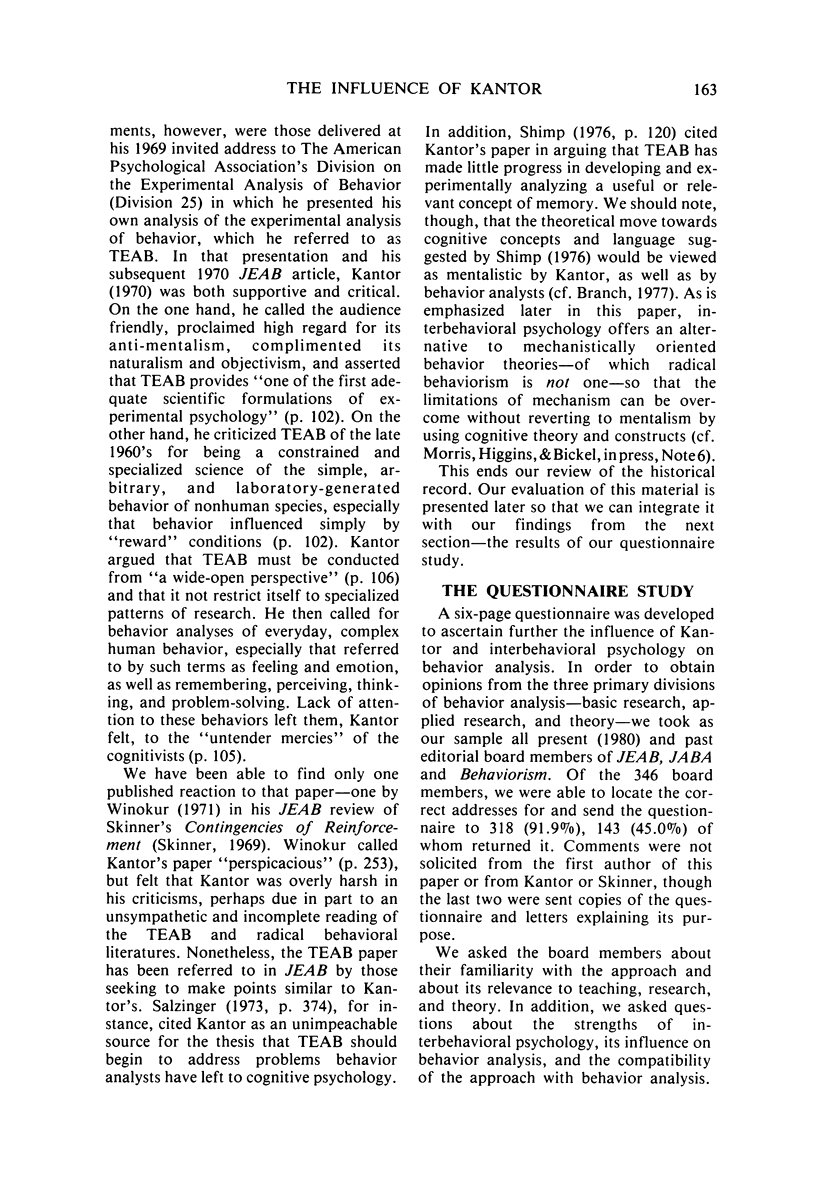

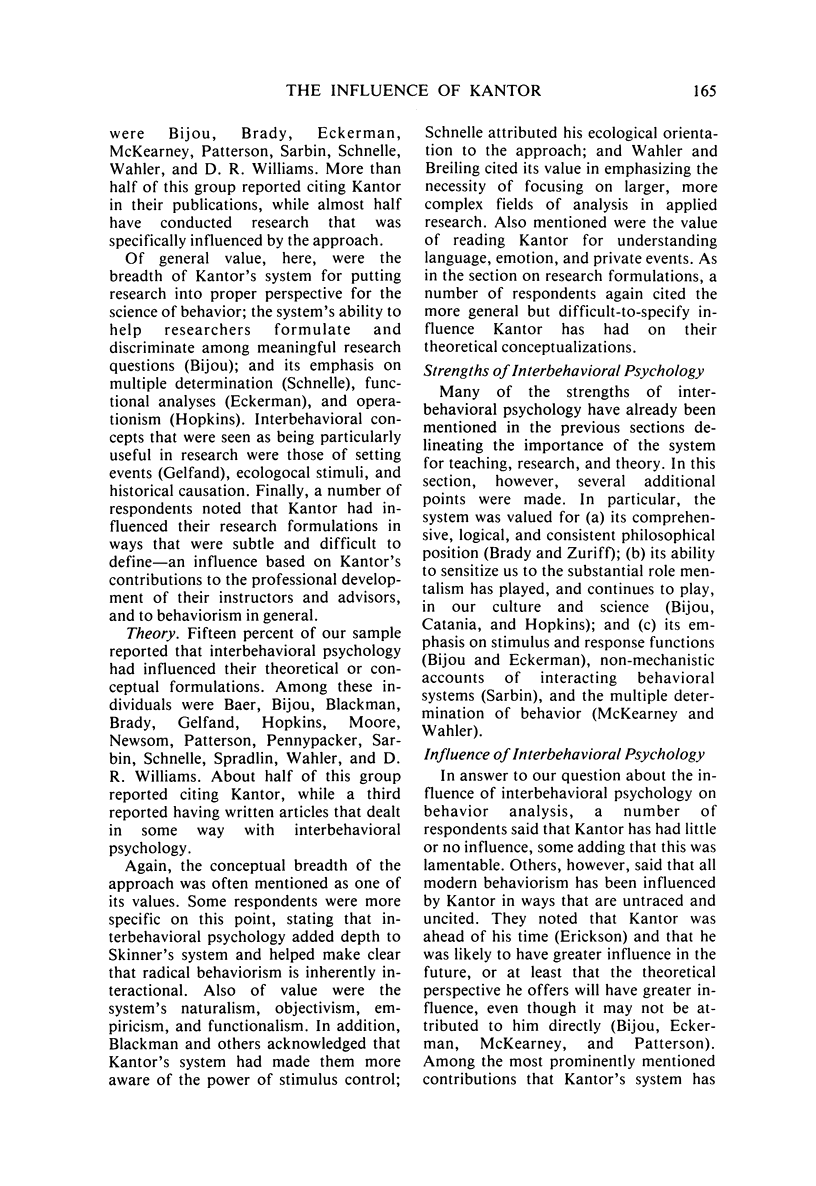
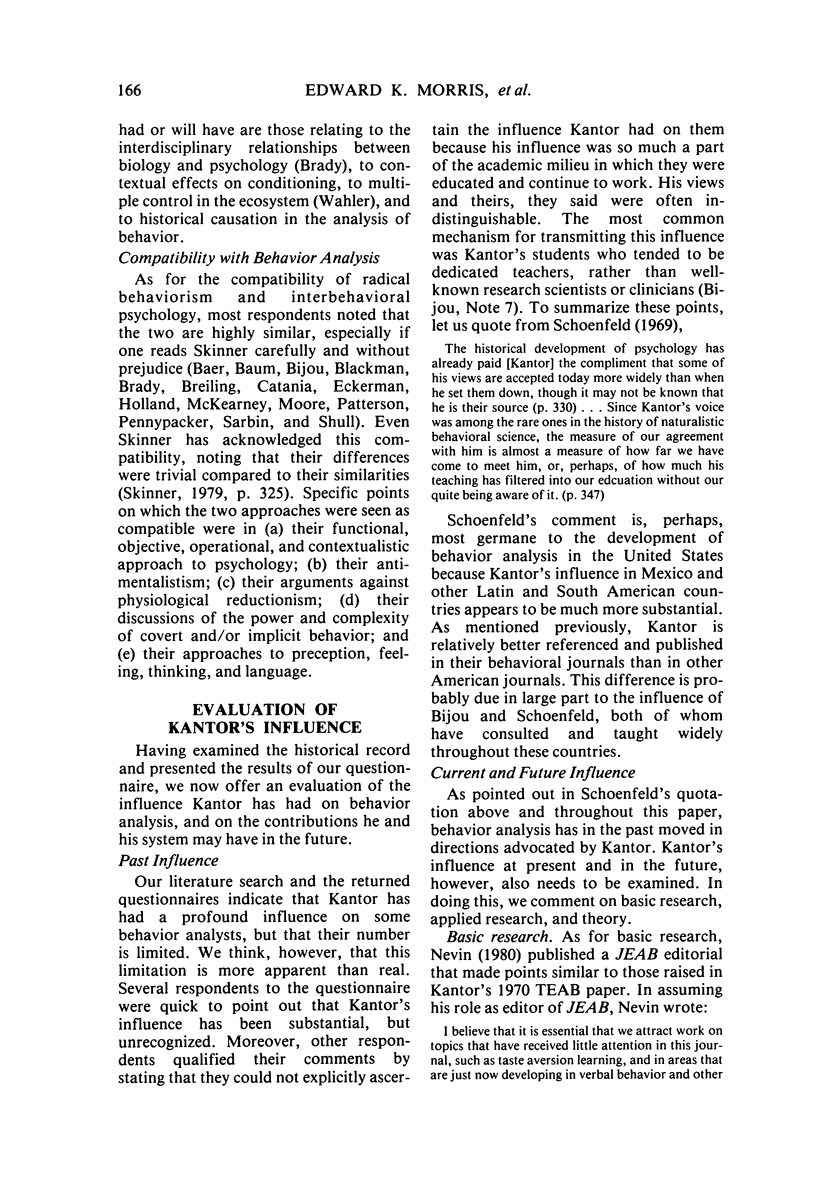

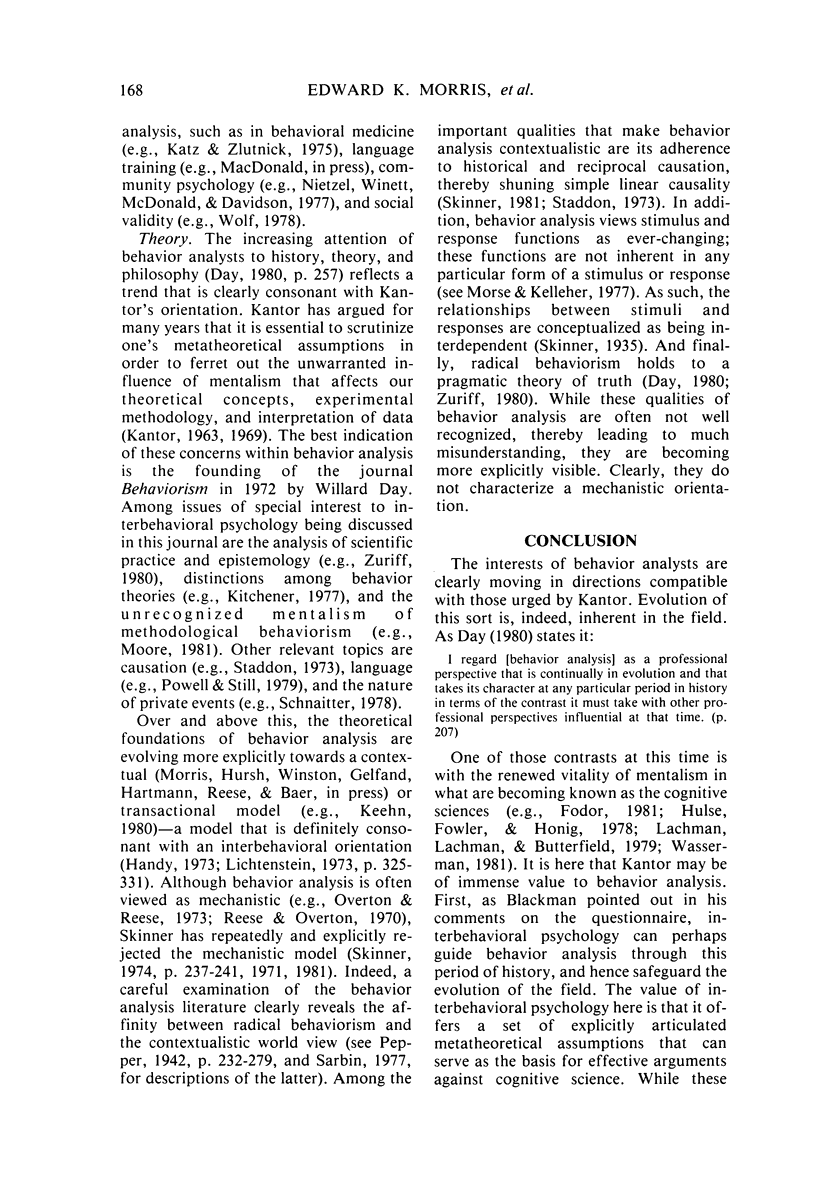
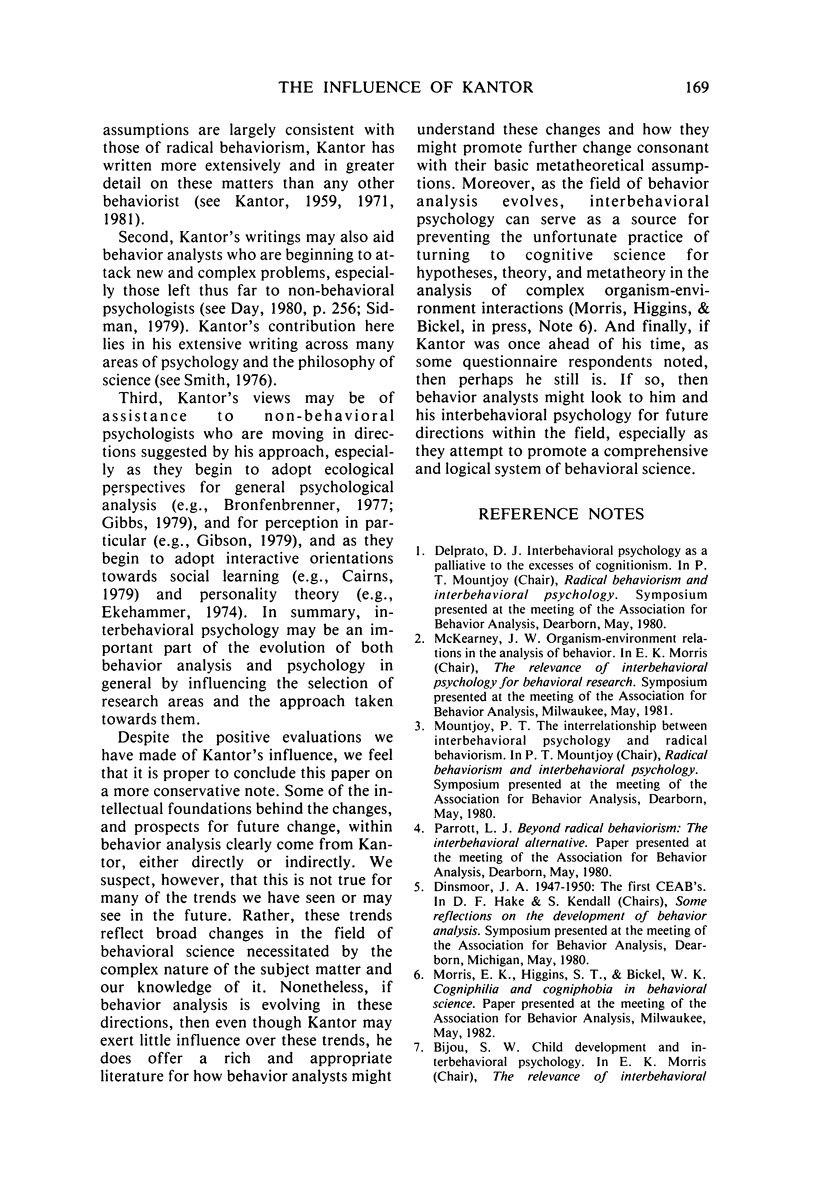

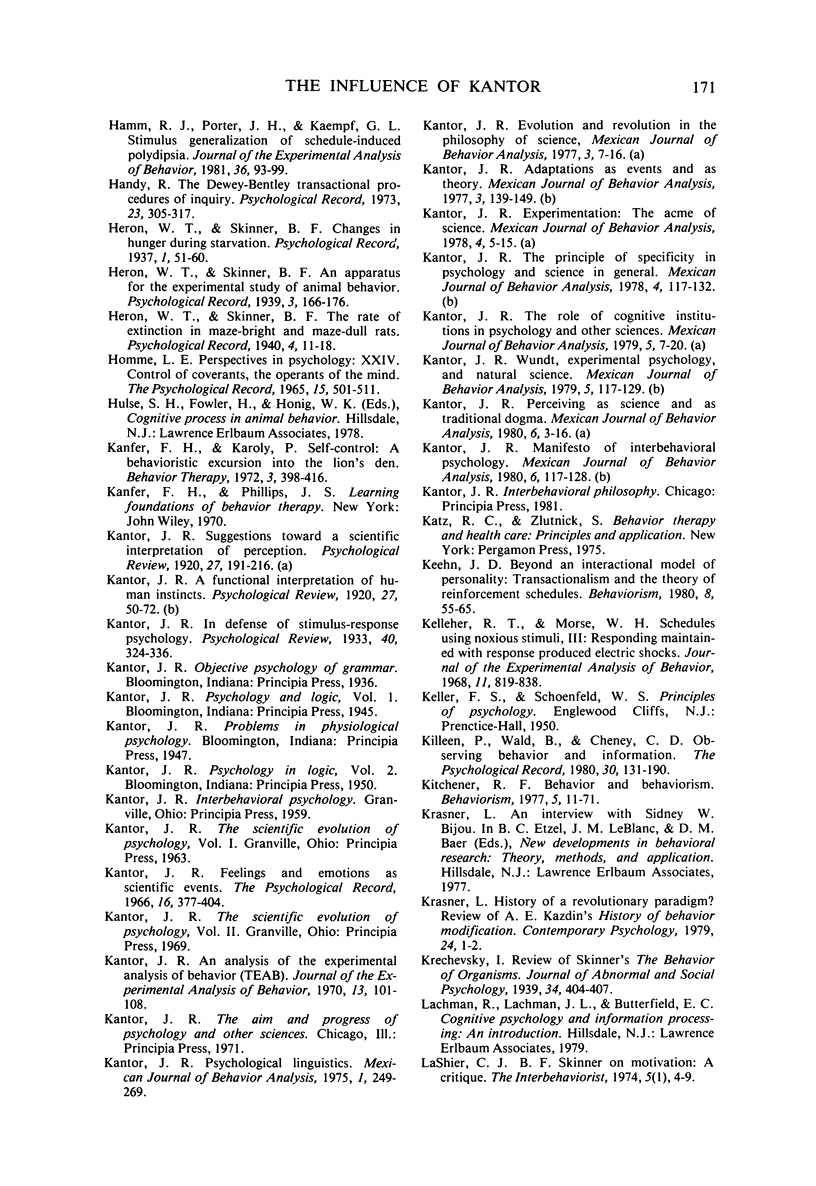


Selected References
These references are in PubMed. This may not be the complete list of references from this article.
- Bernstein D. J., Ebbesen E. B. Reinforcement and substitution in humans: a multiple-response analysis. J Exp Anal Behav. 1978 Nov;30(3):243–253. doi: 10.1901/jeab.1978.30-243. [DOI] [PMC free article] [PubMed] [Google Scholar]
- Brown P. L., Jenkins H. M. Auto-shaping of the pigeon's key-peck. J Exp Anal Behav. 1968 Jan;11(1):1–8. doi: 10.1901/jeab.1968.11-1. [DOI] [PMC free article] [PubMed] [Google Scholar]
- Dixon L. S. The nature of control by spoken words over visual stimulus selection. J Exp Anal Behav. 1977 May;27(3):433–442. doi: 10.1901/jeab.1977.27-433. [DOI] [PMC free article] [PubMed] [Google Scholar]
- Ekehammar B. Interactionism in personality from a historical perspective. Psychol Bull. 1974 Dec;81(12):1026–1048. doi: 10.1037/h0037457. [DOI] [PubMed] [Google Scholar]
- Epstein R., Lanza R. P., Skinner B. F. "Self-awareness" in the pigeon. Science. 1981 May 8;212(4495):695–696. doi: 10.1126/science.212.4495.695. [DOI] [PubMed] [Google Scholar]
- FULLER P. R. Operant conditioning of a vegetative human organism. Am J Psychol. 1949 Oct;62(4):587–590. [PubMed] [Google Scholar]
- Falk J. L. The nature and determinants of adjunctive behavior. Physiol Behav. 1971 May;6(5):577–588. doi: 10.1016/0031-9384(71)90209-5. [DOI] [PubMed] [Google Scholar]
- Fodor J. A. The mind-body problem. Sci Am. 1981 Jan;244(1):114-20, 122-3. doi: 10.1038/scientificamerican0181-114. [DOI] [PubMed] [Google Scholar]
- Gardner M. L., Malagodi E. F. Responding under sequence schedules of electric shock presentation. J Exp Anal Behav. 1981 May;35(3):323–334. doi: 10.1901/jeab.1981.35-323. [DOI] [PMC free article] [PubMed] [Google Scholar]
- Grosch J., Neuringer A. Self-control in pigeons under the Mischel paradigm. J Exp Anal Behav. 1981 Jan;35(1):3–21. doi: 10.1901/jeab.1981.35-3. [DOI] [PMC free article] [PubMed] [Google Scholar]
- Grossberg J. M. Comments about cognitive therapy and behavior therapy. J Behav Ther Exp Psychiatry. 1981 Mar;12(1):25–33. doi: 10.1016/0005-7916(81)90026-4. [DOI] [PubMed] [Google Scholar]
- Hake D. F., Schmid T. L. Acquisition and maintenance of trusting behavior. J Exp Anal Behav. 1981 Jan;35(1):109–124. doi: 10.1901/jeab.1981.35-109. [DOI] [PMC free article] [PubMed] [Google Scholar]
- Hamm R. J., Porter J. H., Kaempf G. L. Stimulus generalization of schedule-induced polydipsia. J Exp Anal Behav. 1981 Jul;36(1):93–99. doi: 10.1901/jeab.1981.36-93. [DOI] [PMC free article] [PubMed] [Google Scholar]
- Kantor J. R. An analysis of the experimental analysis of behavior (TEAB). J Exp Anal Behav. 1970 Jan;13(1):101–108. doi: 10.1901/jeab.1970.13-101. [DOI] [PMC free article] [PubMed] [Google Scholar]
- Kelleher R. T., Morse W. H. Schedules using noxious stimuli. III. Responding maintained with response-produced electric shocks. J Exp Anal Behav. 1968 Nov;11(6):819–838. doi: 10.1901/jeab.1968.11-819. [DOI] [PMC free article] [PubMed] [Google Scholar]
- Lee V. L. Prepositional phrases spoken and heard. J Exp Anal Behav. 1981 Mar;35(2):227–242. doi: 10.1901/jeab.1981.35-227. [DOI] [PMC free article] [PubMed] [Google Scholar]
- Michael J. Distinguishing between discriminative and motivational functions of stimuli. J Exp Anal Behav. 1982 Jan;37(1):149–155. doi: 10.1901/jeab.1982.37-149. [DOI] [PMC free article] [PubMed] [Google Scholar]
- doi: 10.1901/jeab.1981.35-243. [DOI] [PMC free article] [Google Scholar]
- doi: 10.1901/jeab.1971.15-253. [DOI] [PMC free article] [Google Scholar]
- doi: 10.1901/jeab.1973.19-369. [DOI] [PMC free article] [Google Scholar]
- Parsons J. A., Taylor D. C., Joyce T. M. Precurrent self-prompting operants in children: "Remembering". J Exp Anal Behav. 1981 Sep;36(2):253–266. doi: 10.1901/jeab.1981.36-253. [DOI] [PMC free article] [PubMed] [Google Scholar]
- Premock M., Klipec W. D. The effects of modifying consummatory behavior on the topography of the autoshaped pecking response in pigeons. J Exp Anal Behav. 1981 Sep;36(2):277–284. doi: 10.1901/jeab.1981.36-277. [DOI] [PMC free article] [PubMed] [Google Scholar]
- Schoenfeld W. N. J. R. Kantor's Objective Psychology of Grammar and Psychology and Logic: a retrospective appreciation. J Exp Anal Behav. 1969 Mar;12(2):329–347. doi: 10.1901/jeab.1969.12-329. [DOI] [PMC free article] [PubMed] [Google Scholar]
- Shimp C. P. Organization in memory and behavior. J Exp Anal Behav. 1976 Jul;26(1):113–130. doi: 10.1901/jeab.1976.26-113. [DOI] [PMC free article] [PubMed] [Google Scholar]
- Sidman M., Tailby W. Conditional discrimination vs. matching to sample: an expansion of the testing paradigm. J Exp Anal Behav. 1982 Jan;37(1):5–22. doi: 10.1901/jeab.1982.37-5. [DOI] [PMC free article] [PubMed] [Google Scholar]
- Sizemore O. J., Lattal K. A. Dependency, temporal contiguity, and response-independent reinforcement. J Exp Anal Behav. 1977 Jan;27(1):119–125. doi: 10.1901/jeab.1977.27-119. [DOI] [PMC free article] [PubMed] [Google Scholar]
- Skinner B. F. Selection by consequences. Science. 1981 Jul 31;213(4507):501–504. doi: 10.1126/science.7244649. [DOI] [PubMed] [Google Scholar]
- Wahler R. G., Fox J. J. Setting events in applied behavior analysis: Toward a conceptual and methodological expansion. J Appl Behav Anal. 1981 Fall;14(3):327–338. doi: 10.1901/jaba.1981.14-327. [DOI] [PMC free article] [PubMed] [Google Scholar]
- Wolf M. M. Social validity: the case for subjective measurement or how applied behavior analysis is finding its heart. J Appl Behav Anal. 1978 Summer;11(2):203–214. doi: 10.1901/jaba.1978.11-203. [DOI] [PMC free article] [PubMed] [Google Scholar]


